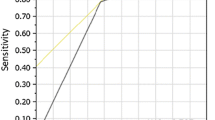Abstract
Testicular function of 17 males treated in childhood or adolescence for nephrotic syndrome (NS) with cyclophosphamide (CY) for a mean time of 240 days (mean total dosage of 16.4 g or 641 mg/kg body weight) was evaluated at a mean time of 11.8 years after treatment. Five were azoopsermic, 1 oligospermic, and 11 normospermic. There was a significant inverse correlation of sperm density with CY dosage and duration of treatment. All patients had undergone normal pubertal development and had normal sexual characteristics. Both basal and gonadotropin-releasing hormone-stimulated follicle-stimulating hormone (FSH) and luteinizing hormone (LH) concentrations were significantly raised in oligo- and azoospermic patients. Raised basal and peak FSH and LH concentrations in normospermic patients with a sperm count of less than 40×106/ml were in keeping with impairment of two testicular components. However, mean basal plasma testosterone levels and mean peak plasma testosterone responses to human chrionic gonadotropin (HCG) did not differ significantly between patients and controls. Although LH responses to gonadotropin-releasing hormone suggested compensated Leydig cell failure in patients with testicular tubular damage, secretory reserve capacity of these cells, estimated by a HCG stimulation test, was preserved. Further follow-up is required to ascertain whether in these patients Leydig cell failure will develop with time.
Similar content being viewed by others
References
Coldbeck JH (1963) Experience with alkylating agents in the treatment of childhood nephrotic syndrome. Med J Aust 1: 987–989
Barratt TM, Soothill JF (1970) Controlled trial of cyclophosphamide in steroid-sensitive relapsing nephrotic syndrome of childhood. Lancet II: 479–482
Chiu J, McLaine PN, Drummond KN (1973) A controlled prospective study of cyclophosphamide in relapsing, corticosteroid-responsive, minimal-lesion nephrotic syndrome in childhood. J Pediatr 82: 607–613
Fairley KF, Barrie JU, Johnson W (1972) Sterility and testicular atrophy related to cyclophosphamide therapy. Lancet I: 568–569
Rapola J, Koskimies O, Huttunen NP, Floman P, Vilska J, Hallman N (1973) Cyclophosphamide and the pubertal testis. Lancet I: 98–99
Penso J, Lippe B, Ehrlich R, Smith FG (1974) Testicular function in prepubertal and pubertal male patients treated with cyclophosphamide for nephrotic syndrome. J Pediatr 84: 831–836
Etteldorf JN, West CD, Pitcock JA, Williams DL (1976) Gonadal function, testicular histology, and meiosis following cyclophosphamide therapy in patients with nephrotic syndrome. J Pediatr 88: 206–212
Lentz RD, Bergstein J, Steffes MW, Brown DR, Prem K, Michael AF, Vernier RL (1977) Postpubertal evaluation of gonadal function following cyclophosphamide therapy before and during puberty. J Pediatr 91: 385–394
Hsu AC, Folami AO, Bain J, Rance CP (1979) Gonadal function in males treated with cyclophosphamide for nephrotic syndrome. Fertil Steril 31: 173–177
Parra A, Santos D, Cervantes C, Sojo I, Carranco A, Cortes-Gallegos V (1978) Plasma gonadotropins and gonadal steroids in children treated with cyclophosphamide. J Pediatr 92: 117–124
Greifer I, Barnett HL (1972) International workshop on risk/benefit assessment of cyclophosphamide in renal disease. Kidney Int 2: 352–353
Trompeter RS, Evans PR, Barratt TM (1981) Gonadal function in boys with steroid-responsive nephrotic syndrome treated with cyclophosphamide for short periods. Lancet I: 1177–1179
Watson AR, Rance CP, Bain J (1985) Long-term effects of cyclophosphamide on testicular function. Br Med J 291: 1457–1460
WHO laboratory manual for the examination of human semen and semen-cervical mucus interactions (1980) WHO Press Concern, Singapore
Arbeitsgemeinschaft für Pädiatrische Nephrologie (1982) Effects of cytotoxic drugs in frequently relapsing nephrotic syndrome with and without steroid dependence. N Engl J Med 306: 451–454
Buchanan JD, Fairley KF, Barrie JU (1975) Return of spermatogenesis after stopping cyclophosphamide therapy. Lancet II: 156–157
Rosen SW, Weintraub BD (1971) Monotropic increase of serum FSH correlated with low sperm count in young men with idiopathic oligospermia and aspermia. J Clin Endocrinol 32: 410–415
Mecklenburg RS, Sherins RJ (1974) Gonadotropin response to luteinizing hormone-releasing hormone in men with germinal aplasia. J Clin Endocrinol Metab 38: 1005–1008
Lipsett MB (1980) Physiology and pathology of the Leydig. N Engl J Med 303: 682–688
Kirkland RT, Bongiovanni AM, Cornfeld D, McCormick JB, Parks JS, Tenore A (1976) Gonadotropin responses to luteinizing releasing factor in boys treated with cycloposphamide for nephrotic syndrome. J Pediatr 89: 941–944
Author information
Authors and Affiliations
Rights and permissions
About this article
Cite this article
Bogdanović, R., Banićević, M. & Čvorić, A. Testicular function following cyclophosphamide treatment for childhood nephrotic syndrome: long-term follow-up study. Pediatr Nephrol 4, 451–454 (1990). https://doi.org/10.1007/BF00869818
Received:
Revised:
Accepted:
Issue Date:
DOI: https://doi.org/10.1007/BF00869818




